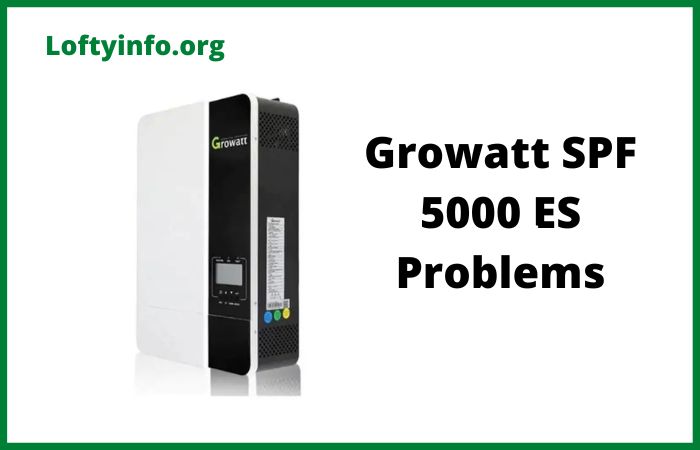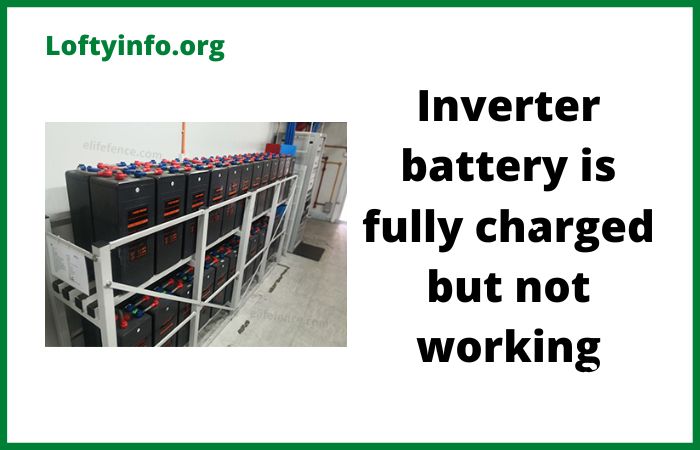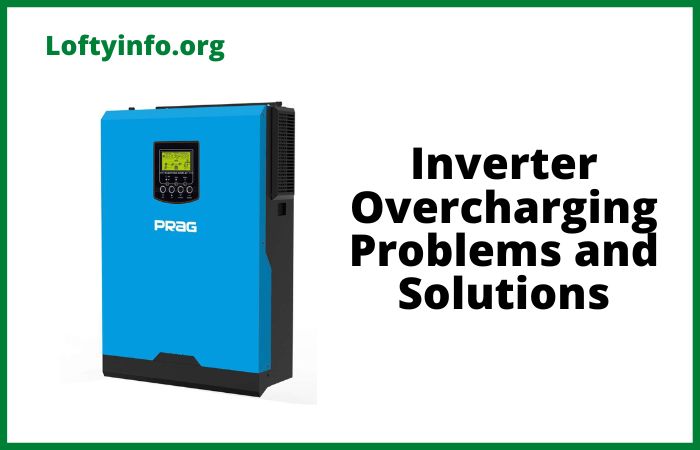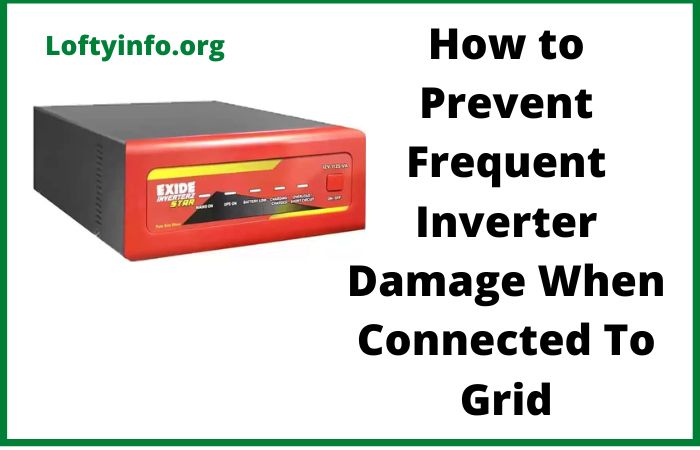Luminous Eco Volt 1050 Troubleshooting Guide For Solving Common Issues
When your power backup system stops working optimally, it can disrupt your entire household or office routine.
The Luminous Eco Volt 1050 is a reliable inverter that powers homes across various regions, but like any electronic device, it can encounter problems over time.
Understanding how to identify and resolve these issues can save you time, money and the frustration of unexpected power disruptions.
This comprehensive guide will walk you through the most common problems users face with this inverter and provide step-by-step solutions to get your system running smoothly again.
Understanding Your Inverter’s Indicators
Before diving into specific problems, it’s essential to familiarize yourself with the LED indicators and display panel on your unit.
These visual cues are your first line of communication with the device, telling you exactly what’s happening internally.
The display typically shows battery voltage, charging status, load percentage and fault codes.
When something goes wrong, these indicators will blink or change color to alert you.
Take a moment to check your user manual for the specific meaning of each light pattern, as this will make troubleshooting much more efficient.
Luminous Eco Volt 1050 Troubleshooting
1) Battery Not Charging
One of the most frequent issues users encounter is when the battery fails to charge.
You’ll notice this when the charging indicator remains off or the battery voltage doesn’t increase even after hours of mains power supply.
Start by checking the most obvious culprits: ensure the mains power supply is active and the main switch is turned on.
Sometimes, a tripped MCB or a blown fuse in your electrical panel can cut power to the inverter without you realizing it.
Next, inspect all cable connections between the inverter and battery.
Loose or corroded terminals can prevent proper charging.
Remove the battery cables, clean any corrosion with a wire brush or sandpaper and reconnect them firmly.
Check the battery water level if you have a tubular or flat plate battery.
Low electrolyte levels expose the plates and prevent charging.
Top up with distilled water until the level reaches just above the plates, but don’t overfill.
If connections and water levels are fine, test the battery voltage with a multimeter.
A completely dead battery showing less than 10V might be deeply discharged and could take several hours to start accepting charge.
If after 24 hours of connection the battery still won’t charge, the battery itself might be damaged or have reached the end of its lifespan.
Batteries typically last three to five years depending on usage and maintenance.
2) Inverter Not Switching to Battery Mode During Power Cuts
When mains power fails but your inverter doesn’t switch to battery backup, you’re left without power despite having a backup system.
This Luminous Eco Volt 1050 troubleshooting issue often stems from battery voltage problems.
Check if the battery voltage is sufficient, the inverter requires a minimum voltage to operate, usually around 11V.
If the battery is deeply discharged, the inverter won’t switch over to protect the battery from further damage.
Examine the changeover relay, which is responsible for switching between mains and battery power.
Over time, this relay can develop faults or get stuck.
You’ll hear a clicking sound during normal switchover; if this sound is absent, the relay might need replacement.
This is a technical repair that typically requires a service technician.
Also verify that the inverter mode is correctly set.
Some models have multiple operating modes like UPS mode, inverter mode or pure sine wave mode.
Consult your manual to ensure you’ve selected the appropriate setting for your needs.
An incorrect mode selection can prevent automatic switchover.
3) Continuous Beeping or Alarm Sounds
Persistent beeping is the inverter’s way of alerting you to a problem.
Different beep patterns indicate different issues.
A continuous beep often signals an overload condition, you’re drawing more power than the inverter can supply.
The Eco Volt 1050 has a capacity of 1050VA, which translates to roughly 700-800 watts of real power.
Calculate the total wattage of all connected appliances.
Common culprits include refrigerators, air conditioners, water heaters and kitchen appliances.
Disconnect heavy load items and see if the beeping stops.
Short, intermittent beeps typically indicate a low battery condition.
The battery voltage has dropped below the safe operating threshold and the inverter is warning you to reduce load or prepare for shutdown.
If this happens frequently even with a fully charged battery, your battery might be aging and unable to hold sufficient charge.
Rapid, continuous beeping accompanied by a flashing red light usually indicates a fault condition.
This could be an internal circuit problem, overheating or a short circuit in your wiring.
Check if the inverter feels excessively hot.
Ensure there’s adequate ventilation around the unit, it should be installed in a cool, dry place with at least 6 inches of clearance on all sides.
If overheating is the issue, turn off the inverter, let it cool down and restart it.
4) Display Shows Error Codes
Modern inverters display specific error codes to help identify problems quickly.
Common codes on the Eco Volt series include E01 for battery low voltage, E02 for battery high voltage, E03 for overload, E04 for short circuit and E05 for overtemperature.
When you see an error code, write it down and refer to your user manual for the specific meaning.
For battery voltage errors like E01 or E02, check your battery health and charging system as described earlier.
Error E02 specifically indicates overcharging which could mean a faulty charging circuit.
This requires professional attention as continued overcharging can damage your battery permanently.
Overload errors or error E03 are resolved by reducing connected load.
Short circuit errors or error E04 indicate a wiring problem in your home’s backup circuit.
Check all connected appliances and wiring for any exposed wires or damaged insulation.
Overtemperature errors or error E05 mean the inverter is too hot, improve ventilation and reduce load.
5) Backup Time Has Reduced Significantly
If your inverter used to provide several hours of backup but now dies within minutes, this is primarily a battery issue rather than an inverter problem.
Batteries degrade over time, and their capacity to hold charge diminishes.
A three-year-old battery might only retain 60-70% of its original capacity.
Test this by noting the battery voltage when fully charged as it should be around 13-13.8V for a lead-acid battery and then observing how quickly it drops under load.
A healthy battery will maintain voltage above 12V for a reasonable duration depending on load. If voltage drops rapidly to 11V or below within minutes, battery replacement is necessary.
Also check if you’ve recently added more appliances to your backup circuit.
Load naturally reduces backup time.
Calculate your total load in watts and your battery capacity in amp-hours to estimate realistic backup time.
The formula is: Backup Time (hours) = (Battery Capacity in Ah × Battery Voltage × Battery Efficiency) ÷ Total Load in Watts.
6) Inverter Turns Off Automatically
Unexpected shutdowns during battery mode can be incredibly frustrating.
This usually happens due to low battery voltage cutoff, a protective feature that prevents complete battery discharge.
If this occurs too quickly after a power cut, your battery is either undersized for your load or has degraded significantly.
Check for loose battery connections that can cause voltage drops under load.
Even a slightly loose terminal can create resistance that causes the inverter to detect low voltage and shut down.
Tighten all connections and ensure they’re corrosion-free.
Internal temperature protection is another shutdown cause.
If the inverter’s internal components exceed safe temperature limits, it will shut down automatically.
This often happens when the unit is installed in an enclosed space or near heat sources.
Relocate the inverter to a cooler, well-ventilated area.
7) Unusual Sounds from the Inverter
While some humming is normal from the transformer and cooling fan, loud buzzing, crackling or clicking sounds indicate problems.
A loud buzzing usually comes from loose components or a failing transformer.
Crackling sounds suggest electrical arcing, which is dangerous and requires immediate professional attention.
Disconnect the inverter if you hear crackling.
A rattling sound often comes from the cooling fan, which might have accumulated dust or have worn bearings.
You can carefully clean the fan area with compressed air but fan replacement should be done by a technician.
When to Call a Professional
While many Luminous Eco Volt 1050 troubleshooting steps can be performed at home, some situations require expert intervention.
If you encounter error codes that persist after basic troubleshooting, notice any burning smells, see physical damage to the unit or if the inverter has been exposed to water, contact an authorized service center immediately.
If you’re uncomfortable working with electrical connections or batteries, it’s always safer to call a professional.
Authorized Luminous service technicians have the proper tools, replacement parts and expertise to diagnose and repair complex issues correctly.
Preventive Maintenance Tips
Regular maintenance can prevent many common issues.
Check battery water levels monthly and top up with distilled water as needed.
Clean battery terminals every three months to prevent corrosion.
Ensure the inverter has proper ventilation and dust-free surroundings.
Test your backup system periodically by simulating a power cut to ensure everything switches over correctly.
Keep your load within the inverter’s capacity and avoid connecting high-power appliances.
Schedule professional servicing annually, especially before monsoon or summer seasons when power cuts are more frequent.
Replace batteries proactively every three to four years rather than waiting for complete failure.
By following this comprehensive troubleshooting guide, you can resolve most common issues with your power backup system and ensure reliable performance when you need it most.
Understanding your equipment and maintaining it properly will extend its lifespan and save you from unexpected disruptions.
Why Some Hybrid Inverters Cannot Power Appliances Directly From Solar Power






